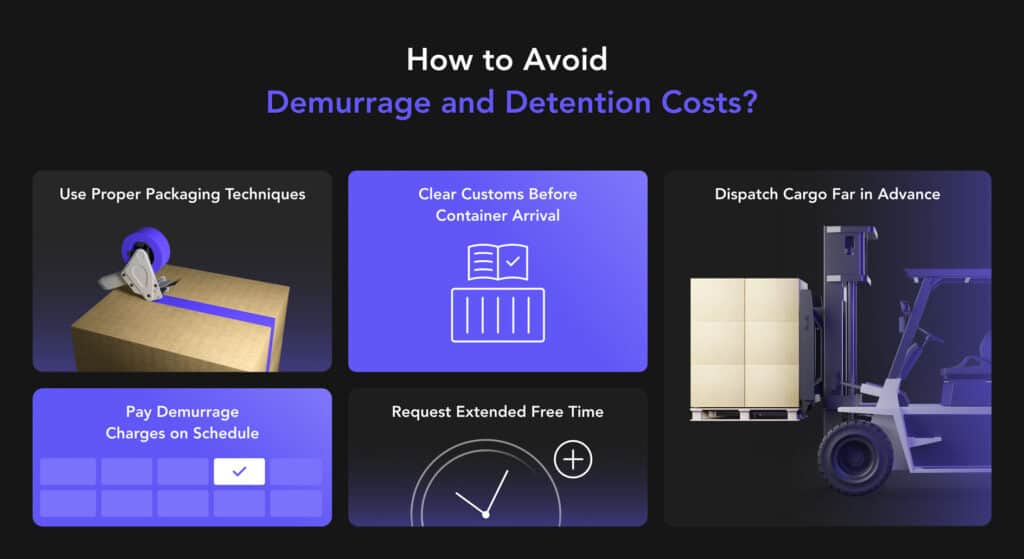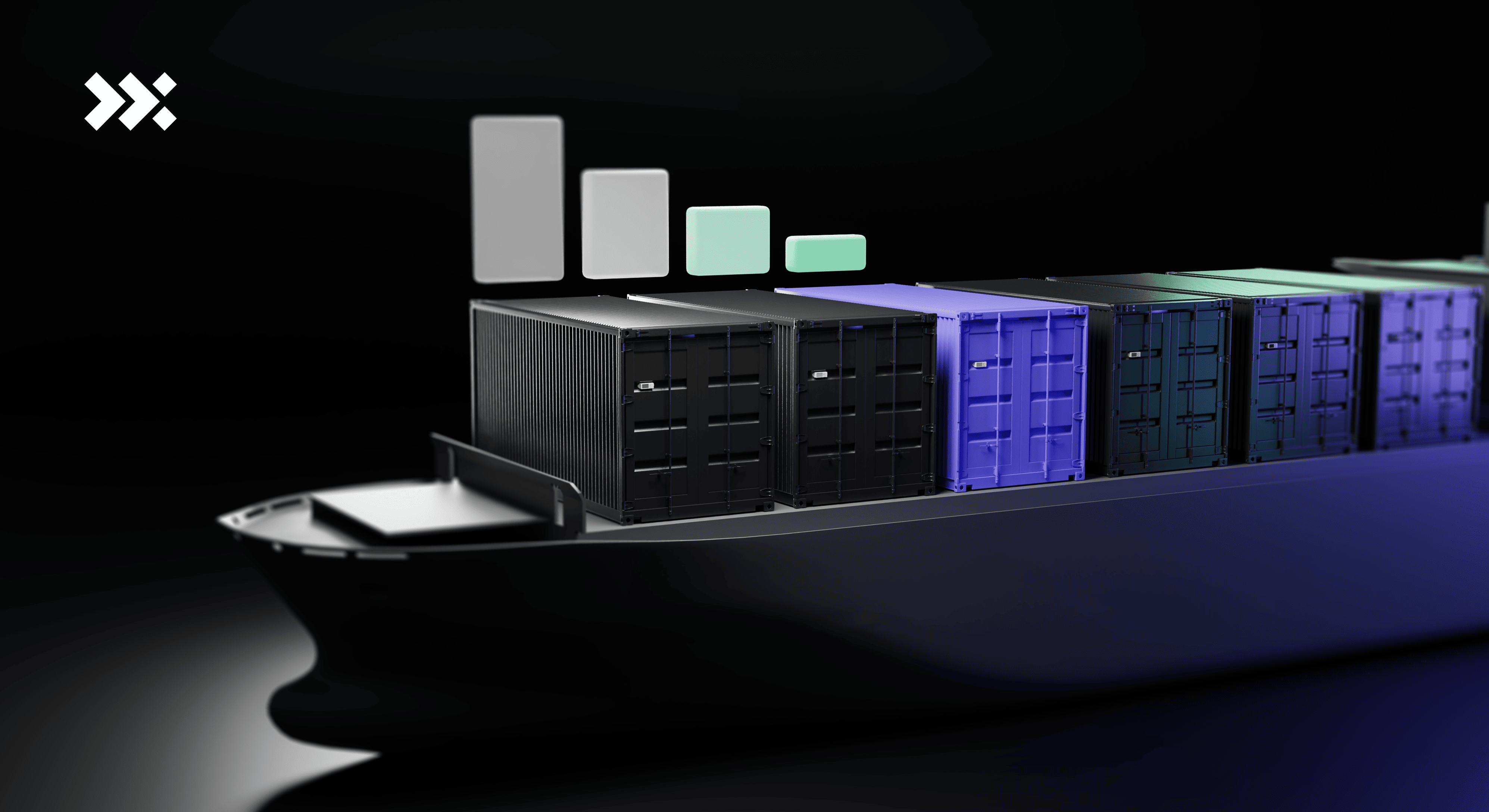Key takeaways:
- Globalization has led to an increasingly complicated network of supply chains stretching all over the world.
- In 2022, the average demurrage and detention fees by major ports remained 12% higher than pre-pandemic fees.
- Improving transparency through integrated IoT technology is the most effective way of avoiding unnecessary costs.
Globalization has delivered many benefits, from global cuisine on our dinner tables to new revenue streams for developing countries. However, it has also led to an increasingly complicated network over the entire shipping industry and involving many suppliers and logistics providers. These complications have also meant new and rising costs associated with freight shipping, including demurrage and detention costs.
What are demurrage charges?
When a shipment arrives at a port or rail yard, it remains under the control of the shipping line until it is picked up. The container has a set period of time, known as the allotted free time, to remain in the port/terminal before being claimed. Demurrage charges are levied by the shipping line after free time concludes, and charges are per container/day until the container is picked up. Demurrage charges can apply to both imports and exports depending on where the container is in its journey – the beginning or the end.
What are the possible reasons for demurrage charges?
Demurrage charges may seem easy to avoid; the importer/exported must pick up the cargo on time. However, there are several factors that can cause demurrage. The possible reasons for demurrage include the following:
- Dispute between the shipper and consignee
- The shipping line did not get the required documents in time for customs clearance
- The documentation received by the shipping line is incorrect or insufficient
- The container was stopped by customs, police, or other official authorities resulting in delayed cargo inspection
- Inefficient funds or finances to clear the container in time.
- The cargo that was received did not match the sales order.
How to avoid demurrage charges?
To help avoid demurrage, it is essential to plan and be proactive in notifying the carrier and driver when to pick up the cargo and if there are any changes or delays. The following steps can help avoid costly demurrage fees.
- Pre-clear cargo with demurrage charges in customs in advance of the container arriving at the port/terminal
- Request or negotiate for extra free days if there are suspected issues that might prevent the carrier from picking up the container on time
- If charged demurrage, pay on schedule; if demurrage charges have already been incurred and are not paid on time, they will continue to increase until paid
Container tracking devices can play a significant role in proper planning, with alerts and GPS coordinates being sent in real-time. Greater visibility means improved planning, empowered decision making and avoiding container demurrage rates.
What are detention charges?
Although detention charges and demurrage fees are sometimes conflated, they are two distinct costs – both of which should be planned for before containers leave port. While demurrage costs are based on the amount of time a container is stored at a terminal, detention costs relate to how long container equipment is allowed to be away from a terminal, with fees also applied after an allotted number of free days have passed.
How to avoid shipping detention fees?
A similar logic applies to avoiding demurrage fees as it does to detention fees – proper planning. The following are specific strategies to help avoid detention charges.
- Use proper packaging techniques to ensure an efficient loading and unloading process; unloading/loading individual boxes rather than pallets can drastically increase time and may mean returning containers late
- Dispatch cargo as far in advance as possible to ensure the loading or unloading party is ready to act
- Request extended free time, like demurrage charges, if you think you will need more time to negotiate this in advance

How are demurrage and detention charges calculated?
Demurrage and detention charges are determined by the shipping line or terminal owner and imposed on the importer/exporter if they exceed the agreed-upon number of free days. The exact number of free days varies, but importers are typically allowed to store their cargo containers between three to five days at the port before demurrage fees start to be applied. Importers have between seven and 10 days before detention charges are levied. Both fees are usually calculated on a per-day basis.
Each port will set its own demurrage and detention charges. If, for example, a shipping terminal charges $75 per cargo container per day, an importer with 10 containers stranded in port for a week could easily end up paying thousands of dollars in avoidable fees. What is more, for particularly lengthy delays, daily fees are likely to increase. As a result, it is essential that businesses do everything possible to ensure that the cargo shipping process goes as smoothly as possible.
How does IoT technology help reduce demurrage and detention fees?
In some ways, the costs of shipping goods have decreased. The adoption of ISO tanks, which stack and hold more than transporting cargo in drums, has led to a reduction in handling costs. They also have the benefit of being transportable via several transport methods, such as ocean freight, rail, shipping, or airline. In many areas, however, cargo transportation costs have risen as supply chains have become more congested. In fact, average demurrage and detention fees at the world’s top 20 container ports increased 104% between March 2020 and March 2021.
Improving transparency around logistics is the most effective way to optimize planning and reduce demurrage and detention fees. Smart containers with integrated Internet of Things (IoT) technology and other bespoke ISO container tracking platforms collect valuable data, providing better visibility of cargo conditions, streamlining the customs process, and adding value along the whole logistics chain.
With real-time visibility, shippers are equipped to adapt and make data-informed decisions. When issues arise, decisions are made swiftly and with the backing of Asset Intelligence and detailed data reporting.
What solutions provide real-time supply chain visibility?
Nexxiot’s track and trace solutions monitor the location and conditions of cargo fleets anywhere and in real-time.
The ATEX-certified Edge gateway combined with Connect Intelligent Cloud software supports shippers in tracking shipments across the full journey. The data and insights accessed in real-time mean businesses are best positioned to plan early, adapt quickly when challenges occur and remain resilient and flexible to changing conditions.
Do not leave demurrage and detention costs to chance. Reduce the likelihood of facing these costly fees through data and insights and experience new levels of supply chain visibility.

